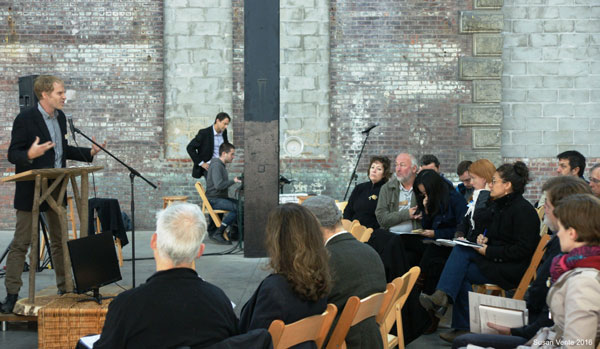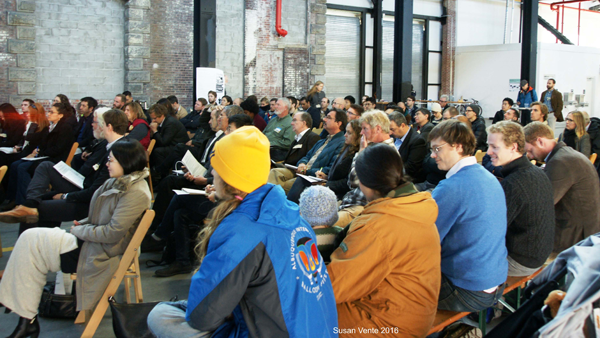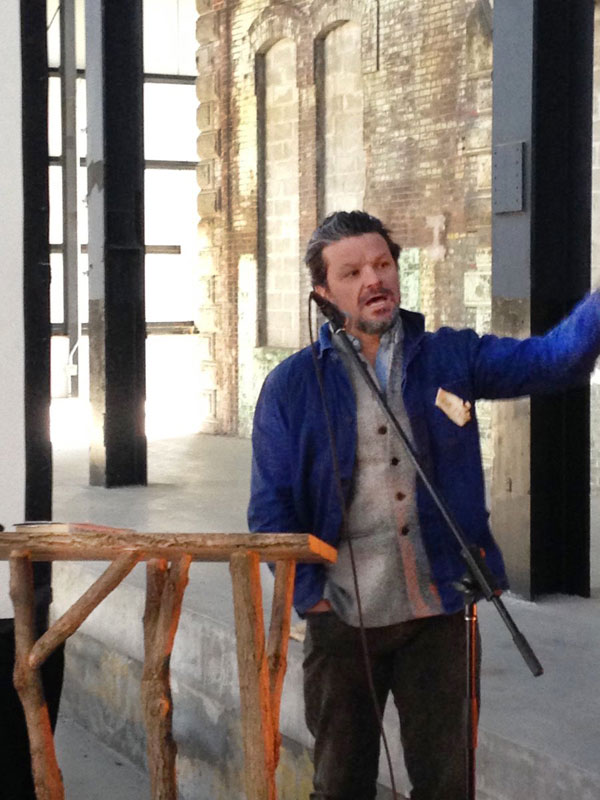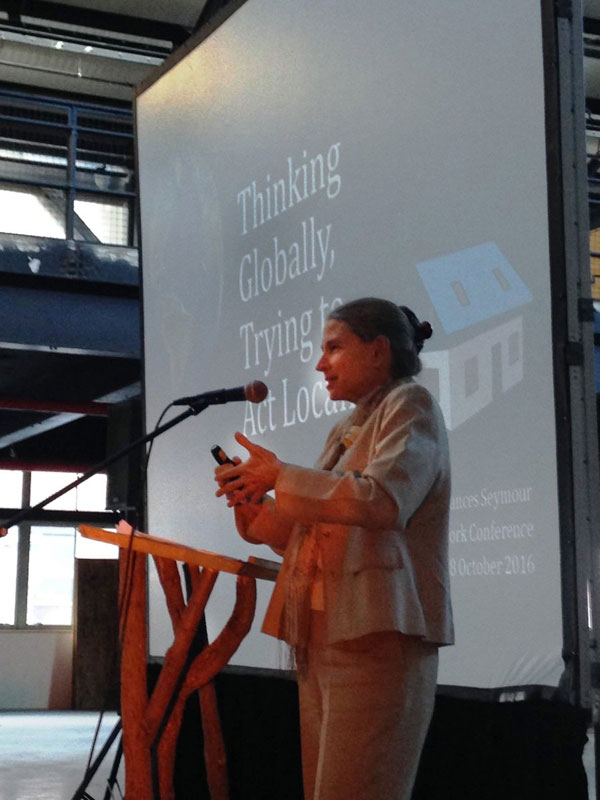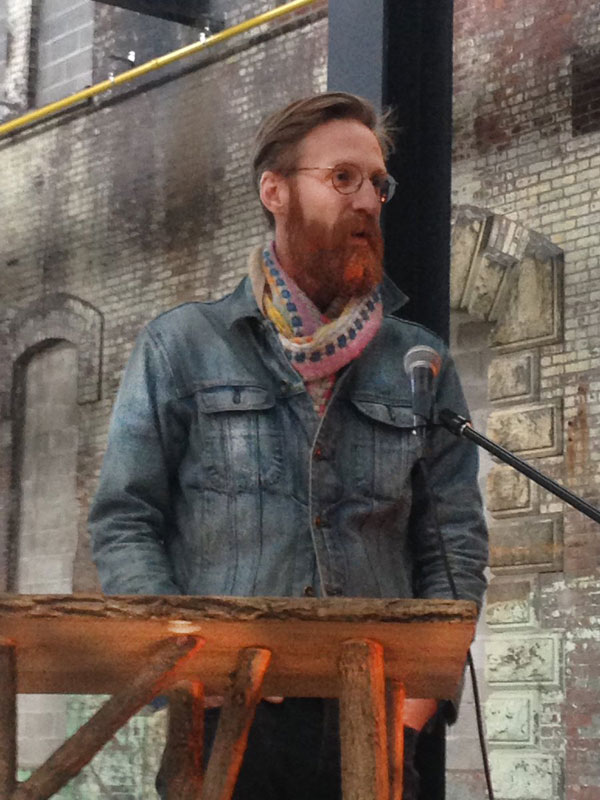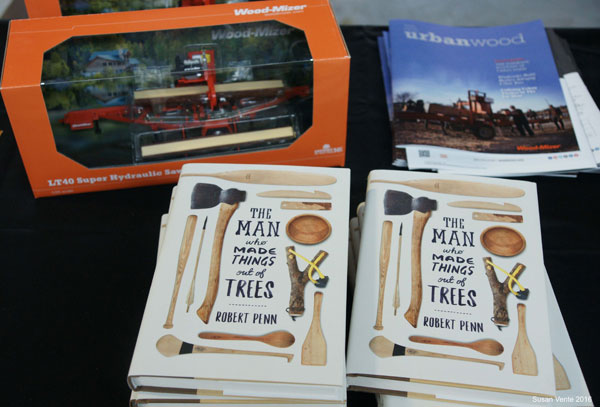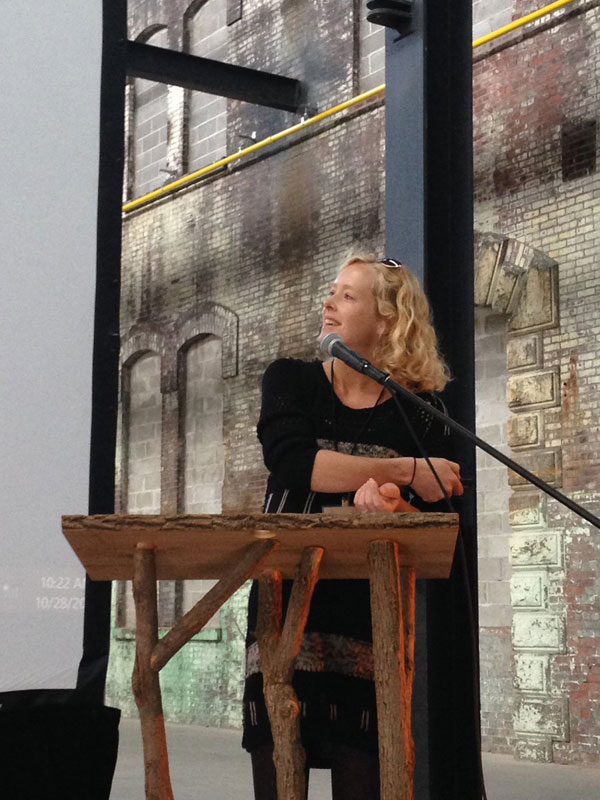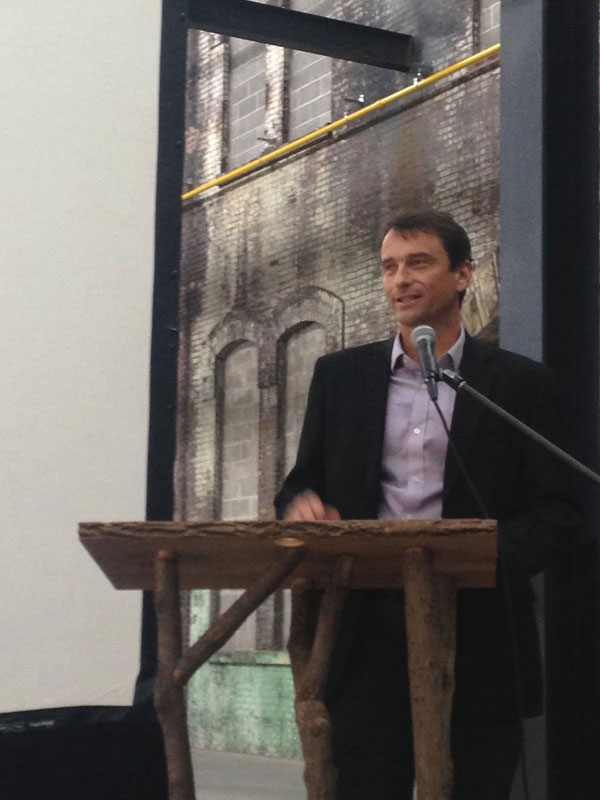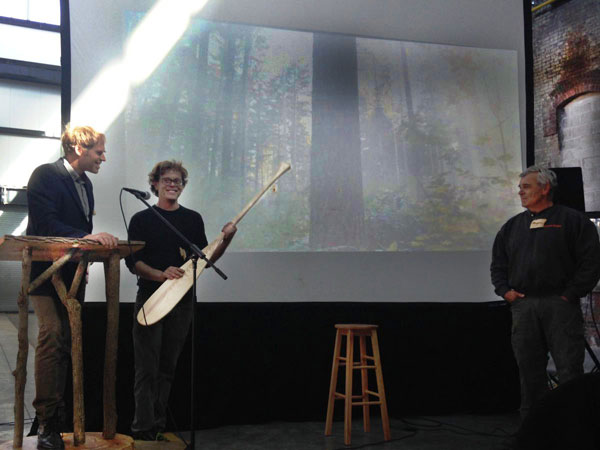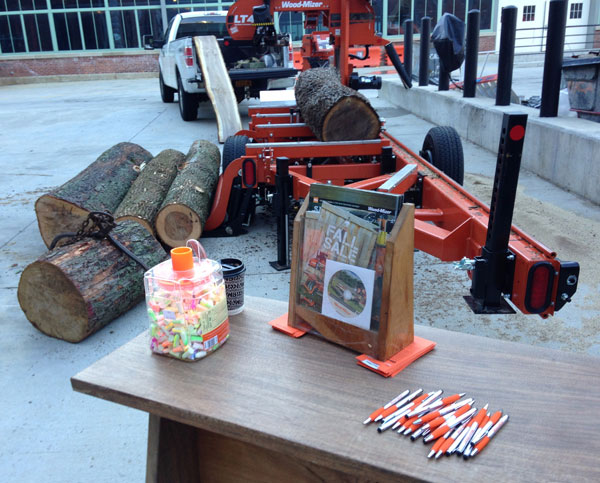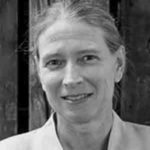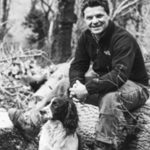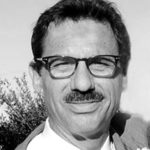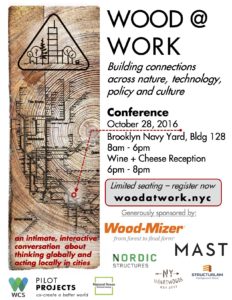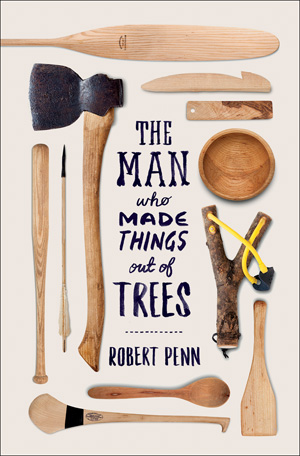Frances is a Distinguished Senior Fellow at WRI. She conducts research and writing on forest and governance issues and advises major initiatives – including Global Forest Watch, the Global Restoration Initiative, the Forest Legality Initiative and the New Climate Economy.
Our 2016 conference featured a lineup of talks and keynotes by leaders in wood construction, urban development, and forest conservation at both the local and global levels, presenting the latest ideas, acomplisments, projects, and challeges concerning wood as a city-building and global forest conservation tool.
Building on the notion of “wood as connector,” we heard speakers and hosted breakout sessions about:
- The Mass Timber Movement: Changing the way we build cities and fight global warming
- Small Forests, Big Impact: Innovation and entrepreneurship in ‘glocal’ wood supply chains
- Upcycling Trees: Cities and the wood reclamation revolution: Reducing waste while creating jobs and opportunities for innovation
- Tropical Forests, People, and Wood: Sustainable-use models, procurement policies, and certification schemes that support forest conservation
For a full recap, visit this blog post.
"The speakers brought a high level of expertise and enthusiasm... moving us into a realm where wood is a natural extension of modern urbanism, both environmentally and structurally."
—Jean Marc Dubois, Nordic Structures
“Groups like Wood at Work can start to connect the dots and make wood more interesting to international policy makers."
—Alan Organschi, Timber City Initiative, Yale School of Architecture, and Gray Organschi Architecture
Wood at Work 2016 presenters included:
Keynote Address: The Man Who Made Things Out of Trees
Penn will share from his journey of discovery that explores the relationship between human culture and the amazing ash tree. At a time when the ash is threatened around the world, his talk will inspire ideas for local action and growth.
Keynote Address: Engineering the World's Tallest Timber Building
Brock Commons, an 18-story mass timber building currently under construction at the University of British Columbia in Vancouver, will be the tallest wood building in the world upon its completion in 2017. Using cross-laminated timber floor panels in a simple design that eliminated the need for beams, the timber structure was erected in just nine weeks with a small crew of laborers. Designed on a fast-track schedule and built on a modest construction budget, this project can help pave the way for future mass timber buildings in urban environments. This presentation will give a broad overview of the design and construction of the building as well as the regulatory hurdles that were overcome to secure approval for this ground-breaking project.
Decision Tree: Selecting wood species based on goals, values, and physical properties
Ron will explain the elements of a decision-making "tree" that facilitates alignment between stakeholder goals and selection of wood species. Considering the complexities of material strength, durability, aesthetic characteristics, environmental and human impacts, specifying and sourcing material, price, availability, and other factors, Ron will discuss a process for helping clients choose the "right" wood for their goals and applications. His talk will also touch on lumber grading, with specific reference to locally-milled wood for structural use, responding to a surge of interest in adding this resource to regional supply chains.
How Much is a Street Tree Worth? Understanding the value and potential of urban trees.
Spring Green Timber Growers has developed an extensive manufacturing and marketing system to earn full retail values for the trees we salvage from local streets and yards, as well as our family forest. We earn from $1,000 for a small tree to $15,000 for a large tree and keep nearly all of the money in our local community. We train workers with the basics of woodworking and pay them well as they learn more everyday. Our business can support one good job for every 10 trees that we handle each year.
Recent progress and challenges from the front lines of forest certification and the market for sustainable forest products
A presentation about the culture of wood in Grimshaw's early work, as well as a focus on specific aspects, insights, and challenges of mass timber on a recent project for Kean University Highlands campus, an immersive year-round, hands-on academic learning center for integrated environmental and design education situated in one of New Jersey's treasured natural areas.
Mass Timber's Unifying Potential
Nordic Structures has been delivering mass timber design built solutions to North America since 2008. In the years following the introduction of CLT production in North America, the challenges facing the industry continue to evolve. This presentation focuses on the collaborative approach that is helping to redefine the preconceptions and process of modern construction, and promote informed dialogue for the emerging path to sustainable construction in the urban milieu.
Lingua Ligna: A new language of wood for an age of re-connection across nature, technology, policy, and culture
The Urban Forest Inventory and Analysis
The US Forest Service is expanding its national census of trees to include trees in cities. The Urban Forest Inventory and Analysis (Urban FIA) program includes not only data on trees but also on tree owners and urban wood utilization. We’ll provide a brief overview of this initiative and how it can create jobs, reduce waste, and lead to healthier urban environments.
What can NYC do with 40,000 tons of "waste" wood?
A Parks Department perspective on using the wood from NYC's forests more productively.
Bram Gunther is Co-Director of the Urban Field Station, the science and research hub of Forestry, Horticulture, and Natural Resources of the New York City Parks Department, which is co-run by the U.S. Forest Service. He was previously Chief of Forestry, Horticulture, and Natural Resources. He is also Co-Founder and President of the Natural Areas Conservancy, a public/private partnership established to unify the City's efforts to conserve, restore, and protect tens of thousands of acres of municipal forests, wetlands, and grasslands. He joined the New York City Parks Department in 1991 as an Urban Park Ranger. Three years later, he became the Citywide Director of the Rangers. He transferred to Central Forestry in 2000 and first as Deputy Chief and then as Chief oversaw the growth of the division. He has a bachelor’s degree in American literature from State University of New York at Purchase and a master’s degree in environmental management from the Yale School of Forestry & Environmental Studies.
Mobilizing Markets for Community Forest Enterprise
Expanding markets for lesser-known species (LKS) has long been identified as a key need to increase the competitiveness of community forest enterprise (CFE), especially in the tropics. A production focus on a single or small range of forest species with strong market demand places operations at risk for multiple reasons, from concerns about over-harvesting to enterprise exposure to shock if and when market dynamics change. While the need for diversification has been recognized for decades, only in recent years has there been significant expansion in demand for many LKS that previously had negligible market pull. The present case study chronicles work undertaken by the Rainforest Alliance to support CFEs in the Maya Biosphere Reserve, Guatemala, working with the second-tier business FORESCOM, to meet demand for LKS from a European buyer. The central finding of this case study is that LKS markets can significantly benefit CFEs, as long as there is adequate finance for investment and solid enterprise capacity supported by technical assistance.
Excepts from The Littleton Trials: The non-expert approach
The Littleton Trials, underway at Prouty Woods in Massachusetts, consists of two mass timber-formed huts and a stickered pile of site-milled lumber (the basis of a third hut to be constructed in late 2016). The project operates critically at several scales. At the forestry scale, it is sensitive to existing and more efficacious silviculture in greater New England. At the construction scale, it explores novel techniques in geometry and fabrication. And at the human scale, it tests the thermal performance of a mass timber construction with new and established techniques. This presentation will focus on the on the interface of the two larger scales, forestry and construction, as they are manifest in a set of systems and processes of production.
From Aboriginal to Modern Architecture: Three buildings of Patkau architects
Patkau architects are internationally known for their innovative architecture, which often features wood as a material and cultural theme. The firm begins each project by searching for localized particular characteristics of site, climate, building context, program, and local culture, which contribute to the development of an architectural order. Before looking into the three awarded projects—Seabird Island School, Strawberry Vale School, and Gleneagles Community Center—this paper explores the use of wood in the aboriginal longhouse in North America, which is framed and defined by the rituals and kinship network of the aboriginal people. Returning to the three projects by Patkau architects, will show how these modern architects see the connection between the social, material, and spatial, and weave the habits, beliefs, rituals, and expectations of society into their designs.
Sustainable Forests, Sustainable Campus
The University of Arkansas Fay Jones School of Architecture and Design and the Arkansas Forest Resources Center have received a grant from the US Forest Service for a collaborative project that simultaneously addresses several of Wood at Work 2016’s themes, including ‘sustainable wood procurement and production,’ ‘wood in the design of contemporary buildings,’ and ‘innovations in forest conservation’ by utilizing the timber products harvested from an ongoing Collaborative Forest Land Restoration Project in the Ozark National Forest in northwest Arkansas to address an urgent need for a new sustainable dormitory prototype at the University of Arkansas by (1) designing an innovative cross-laminated timber (CLT) based system that simultaneously has environmental, economic, and aesthetic benefits, and (2) to evaluate the sawmill residues from related timber processing for the manufacture of wood pellets for heating. In summary, this project utilizes a very large proportion of the woody biomass produced from local forest restoration projects by (1) utilizing low-quality lumber for structural components and (2) using the corresponding wood waste as an energy source. Together, these wood products provide for the sustainable construction and energy needs of innovative contemporary designs of multi-story residential buildings while promoting local forest health and conservation.
Is There a Place for the Small Sawmill in Urban Construction?
New England’s 33 million acres of forest provide the potential to complement global sourcing of wood for the next generation of sustainable building. However the cultural, environmental, and rural socio-economic benefits of sourcing local wood often are unable to be realized due to low-volume capacity and dispersed manufacturing. Is there a place for smaller mills in meeting the resource needs of urban construction? Using the newly completed Walden Pond Visitor Center (Lincoln, MA) as a case study, this session will expose participants to the challenges of navigating structural code, searching for suppliers, and sourcing wood from trees growing onsite.
A short documentary film premiere featuring the sustainably-managed tropical forest in Uaxactun, Guatemala's Maya Biosphere Reserve
The Brooklyn Bridge Forest initiative proposes replacing the aging boardwalk of the bridge with one of the world’s most sustainably harvested tropical hardwoods, grown in the Maya Biosphere Reserve (MBR) of Guatemala. The dense species of hardwood, called manchiche, would be harvested in the MBR’s Uaxactun community forest concession. Since 2000, Uaxactun’s inhabitants have learned how to manage their 208,000-acre forest to strict FSC standards. Trees are harvested on a completely sustainable 40-year cycle. The Rainforest Alliance heralds their practices as a worldwide model for sustainable forestry. The timber harvest is a crucial economic element to the prosperity of the community, which, though remote and small in population, has lived sustainably from their forest resources for 100 years.
Creating the Opportunity for Forests to Increase Biodiversity, Reduce Fossil Fuels, Sequester CO2, and Employ People—with Transparent, Sustainable Management
Forests are an opportunity and an underperforming treasure. Many contain endangered species. They occupy 27% of the world’s land but employ 0.4% of the world’s workforce. Only 20% of the wood that grows each year is harvested—and only 6% is used for construction. We could reduce fossil fuel consumption and CO2 emissions by 15% to 20% by building with more wood. We could employ 6% of the world’s workforce by using high technology, small equipment in the woods. We are developing technologies to manage the forest to save species and provide wood products and jobs and other values transparently.
Timber City: The biomass scenario
The Timber City research and development project examines an alternative to fossil fuels: the transformation of dense urban centers from CO2 emitters into massive carbon sinks, made possible through the broad implementation of emerging mass timber construction technologies and regulatory and economic policies that promote timber building in cities and sustainable management of source forests. Based on the carbon storage potential of a mass timber urban building prototype deployed at the scale of a city district and the capacity of regional source forests to supply it sustainably, Timber City extrapolates both direct and associated benefits of a systemic shift from a mineral- to forest-based building economy and describes a supply chain model that places resilient, biodiverse forests in synergy with convivial, densely populated cities.
Updates from the front lines of wood construction and the mass timber movement in the Northeast
Marc will focus on recent building code interpretations, fire and blast testing, and other techincal developments as they pertain to tall wood buildings in the wood renaissance.
More Trees, Fewer Cows: The battle against cattle in Central America's forests
Cattle are the most significant global threat to tropical forests and biodiversity. Between cattle pasture and cropland for animal feed, the livestock sector covers 30% of the earth’s land surface and contributes 14% of total climate emissions. Demand for beef is projected to increase 70% by 2050, driven by a 30% human population increase and a burgeoning middle class. To address global climate change, forest loss, food security, and human health, we must implement policies and practices to promote more trees and fewer cows. This talk tells the story of cows and trees in Central America during the past 15 years, based upon an in-depth analysis synthezing multiple types of information, including remote sensing and forest flyovers.
Opportunities for mass timber in climate responsive building design
Jeff will convey how mass timber completes the creation of a healthy building system. Pratik provides direction for high-comfort low environmental impact design on a diverse range of projects. His organic style of design thinking and focus on creating human-centric solutions generate project-specific, often innovative, environmental concepts; and his strategic approach to communicating the new concepts helps them turn into reality. Using built project case studies, he will discuss the application of timber in the holistic climate-responsive design for creating comfortable indoor environments in large-scale buildings without HVAC systems.
Agroecological Design & Master Planning
Presentation of the Ironbound Farm project-in-progress, including explanations of agroforestry, fungiculture, wild foods, hard cider, and the culinary and jobs creation aspects of this agroecological and food systems project.
Strategies and Innovations for Community Forest Management
This presentation will explore innovative strategies for supporting best management practices around community forestry in both urban and rural contexts. In particular, we will address how tools, such as small-mill technology, can be used by community forests to adapt forest management practices and successfully market products to new customers. Not only will we address issues concerning forest operations but also how to create a successful business plan employing these strategies while growing local and regional supply chains and reengaging a greater public interest in successful forest management.
The Future of Forest Work and Communities: Engaging the next generation of conservation leaders and entrepreneurs from within rural and forest landscapes
“Everything we do, it’s cedar:” First Nation and ecosystem-based foresters’ relationships and practices with western redcedar (Thuja plicata) in Coastal British Columbia
People’s values and attitudes regarding the natural world determine the level of care with which they approach the use of natural resources. We studied how human relationships with nature influence people’s actions using western redcedar (Thuja plicata), a major forest tree of northwestern North America, as a study system. Interviews were conducted with Northwest Coast Indigenous people and ecosystem-based foresters in coastal British Columbia. Both groups expressed a personal—often spiritual—connection with nature, both value long-term management strategies, and both have similar environmental concerns. First Nation individuals have a unique spiritual relationship with western redcedar that correlates to both everyday and ceremonial practices with cedar, while ecosystem-based foresters have personal and academic relationships broadly with nature. These results are particularly useful to show that people from varied cultural backgrounds can care for the environment in similar ways and to demonstrate the nexus between relationships and practices with natural resources.


